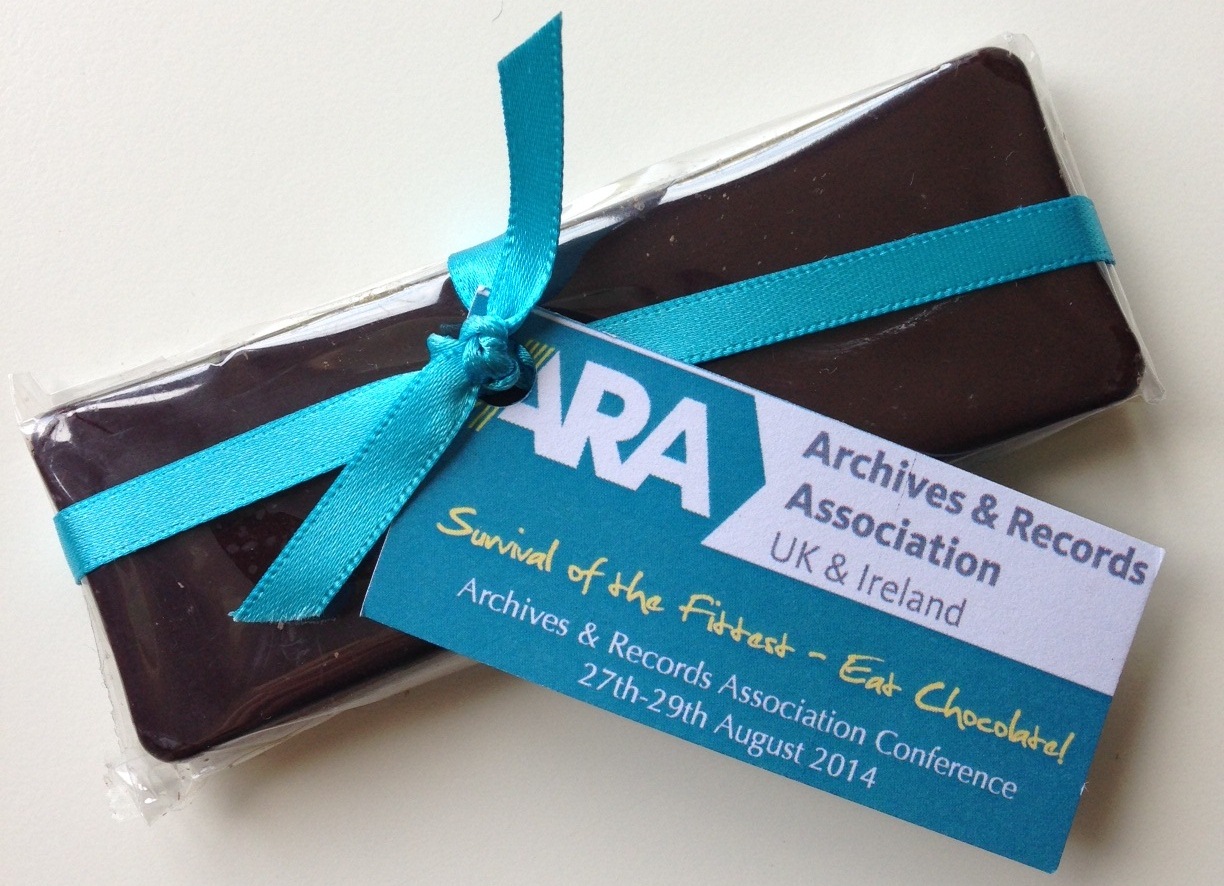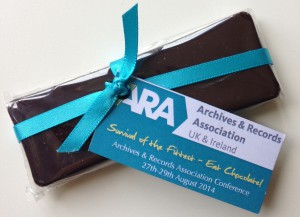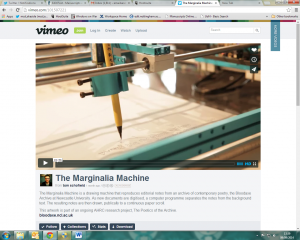
September 24, 2014, by Sarah Colborne
Embracing serendipity at the annual archives conference
‘Survival of the fittest’ was the theme for this year’s Archives and Record Association conference. Archivists, records managers and conservators from all across the UK and beyond gathered in Newcastle to share positive stories and advice, in an era which has seen damaging cuts to services (particularly in local record offices).

Survival of the fittest: eat chocolate! (chocolate bar issued to archivists at the annual conference).
There was no room for despair at the conference as speakers presented sometimes radical suggestions for how the sector should be adapting to the challenges ahead. Keynote speaker for day one, Rick Prelinger, founder of the Internet Archive, suggested that archives should become ‘noisy’ places – mini-universities in their own right, where people come to share ideas, collaborate and contribute. There was a strong sense that archivists should be experimenting with new ways of presenting information about the material we hold; a move away from query-based discovery to more radical methods of enabling exploration and embracing serendipity.
One example I found particularly inspiring was the Poetics of the Archive project based on the Bloodaxe Books collection (contemporary poetry publishers archive) held by Newcastle University. The existing archive catalogue was deemed ‘incompatible’ with the kind of creative exploration that many of its users favoured, so the project teamed archivists with an artist interested in interaction design (based at Newcastle’s Culture Lab). The results were weird and wonderful, including: an interactive box list, which shows how the contents of a box connect with the contents of other boxes in the collection (useful!); an interface which conceals the content of digitised letters until you move your mouse over it (annoying!); and a Marginalia Machine – a robot which traces the notes made in the margins of the manuscripts (bizarre!). Now, what automata could we create for Manuscripts and Special Collections?! We’d love to hear from anyone who has suggestions for how we can ‘improve serendipity’ in our online catalogue. Our contact details are on our website, or you can reach us via Twitter @mssUniNott.
No comments yet, fill out a comment to be the first


Leave a Reply